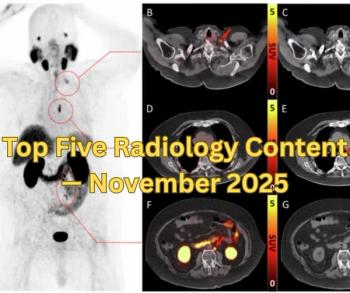
What Method Is Best for Detecting Prostate Cancer Metastases?
The imaging process provides the most time-efficient sequence with the highest lesion detection rate and conspicuity.
Gadolinium-enhanced T1-weighted volumetric interpolated breath-hold exam (VIBE) is best for detecting prostate cancer metastases, according to a study published in the
Researchers from Canada performed a prospective study to compare the diagnostic value of various MRI sequences used for whole-body (WB) 18F-fluorocholine (FCH) PET/MRI staging of patients with high-risk
The results showed the gadolinium-enhanced T1-weighted volumetric interpolated breath-hold exam (VIBE) was the best of the four sequences:
Conspicuity of metastases on gadolinium-enhanced T1-weighted VIBE and WB DWI sequences was higher than that on Dixon T1-weighted sequences.
The researchers concluded that metastases from prostate cancer are best detected at DWI or gadolinium-enhanced T1-weighted VIBE sequences. The most time-efficient sequence with the highest lesion detection rate and conspicuity is gadolinium-enhanced T1-weighted VIBE.
Newsletter
Stay at the forefront of radiology with the Diagnostic Imaging newsletter, delivering the latest news, clinical insights, and imaging advancements for today’s radiologists.


























